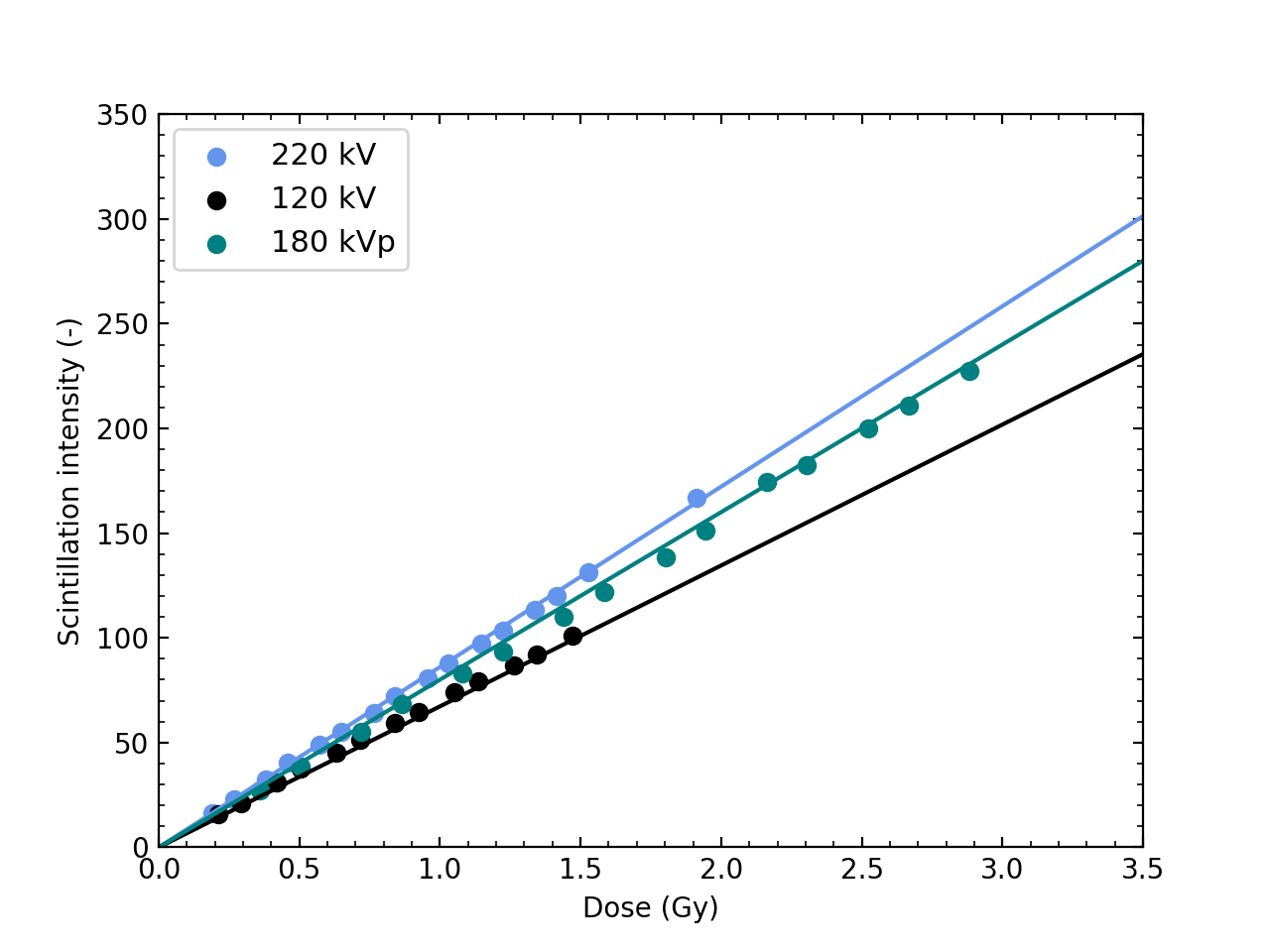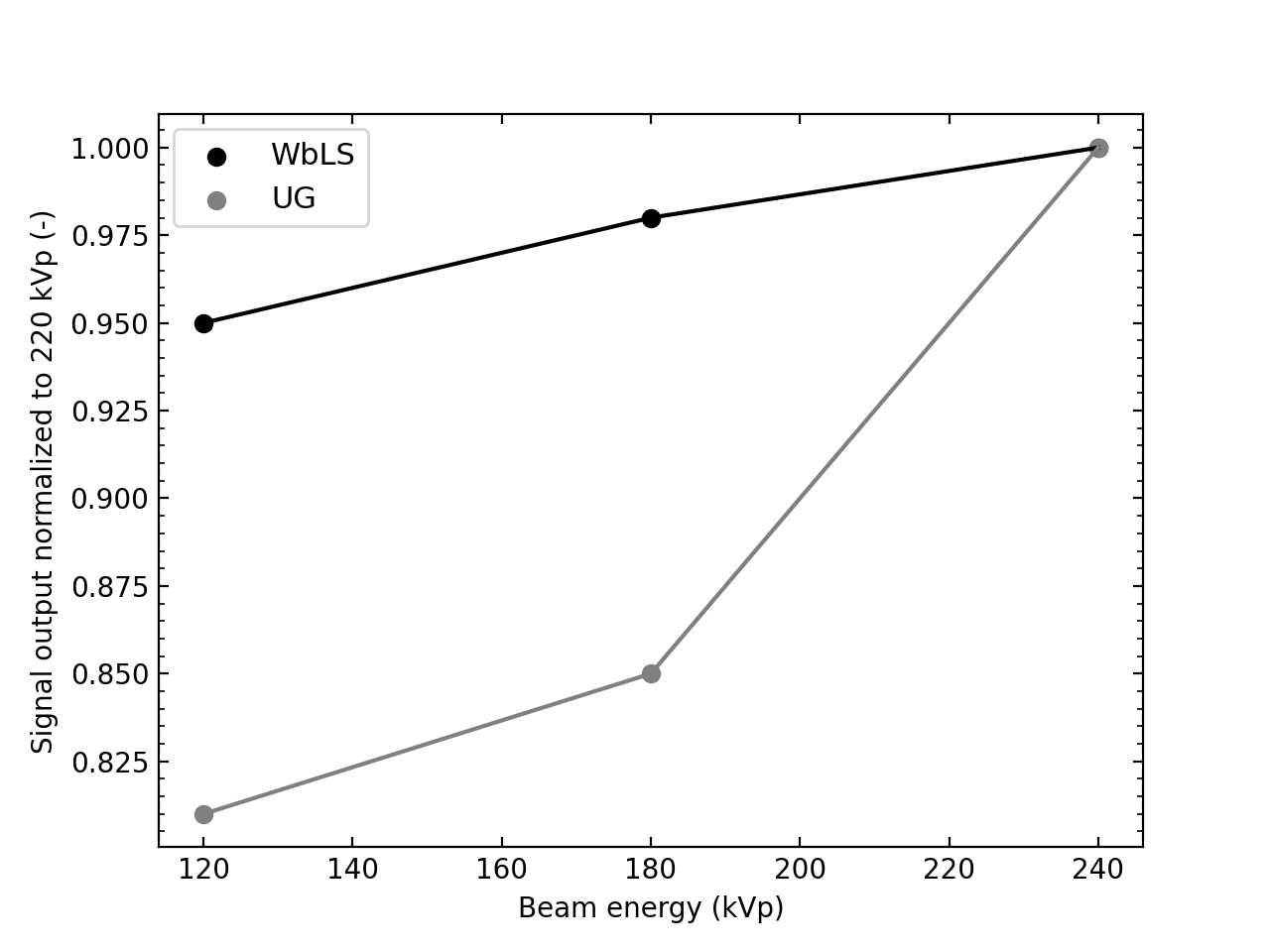Dosimetric properties of a water-based liquid scintillator for use in kV energy photon beams
Daphnée Bernier-Marceau,
Canada
PO-1762
Abstract
Dosimetric properties of a water-based liquid scintillator for use in kV energy photon beams
Authors: Daphnée Bernier-Marceau1,3, Luc Beaulieu1,3, Émily Cloutier1,3, Minfang Yeh2
1Université Laval, Département de physique, de génie physique et d'optique , Québec, Canada; 2Brookhaven National Laboratory, Neutrino and Nuclear Chemistry, Upton, USA; 3CHU de Québec – Université Laval and CRCHU de Québec, Centre de recherche sur le cancer, Université Laval, Québec, Canada
Show Affiliations
Hide Affiliations
Purpose or Objective
Existing dosimeters are sometimes toxic to humans and the environment, which leads to more care in clinical settings. In this regard, it is necessary to provide alternative scintillators that would no longer have these problems while having properties equivalent to those of human tissues both at lower and higher energies. Thus, this work presents the characterization at kV beam energies of a new type of liquid scintillator that is mainly composed of water. The characteristics studied include the proportionality of the scintillation signal to the dose, the scintillation efficiency as well as the energy dependence of the scintillator.
Material and Methods
The measurements were made using a Xstrahl 200 orthovoltage device (Xstrahl, Camberley, United Kingdom) at energies of 120 kVp, 180 kVp and 220 kVp. A SBIG Aluma U694 CCD camera (Diffraction Limited, Ontario, Canada) was used to collect the dosimeter light with a specific time integration that corresponds to the targeted absorbed dose, as deposited in water. The reference dose in water was determined with an ionization chamber. The scintillation signal was also collected and guided through a clear optical fiber. The spectrum obtained from each irradiation was measured from the spectrometer QE-65 Pro (Ocean Optics, Dunedin, USA). All the responses were compared to characteristics of a known scintillator, Ultima Gold (UG).
Results
The scintillation intensity of the water-based liquid scintillator (WbLS) is represented in the figure below as a function of the absorbed dose. Linear trends of the signal as a function of dose were found for all liquid solutions with correlation coefficients R2 > 0.995 for the three energies used. No correction for Cherenkov emission was made since the energy threshold of water and the optical fiber are respectively 264 keV and 178 keV which are higher than most of the energies present in the three spectra. The scintillation signal of both the scintillator is shown in the second figure as a function of the energy of the photon beam. Each value is normalized to the scintillation signal at 220 kVp. The UG liquid scintillator has the highest energy dependence with an increased output of 19% at 220 kVp compared to the signal obtained at 180 kVp. WbLS has an output at 220 kVp that is 2% and 5% more than the signal at 180 kVp and 120 kVp respectively. It is to be noted that the scintillation output of WbLS is 10 % of the signal of the reference liquid scintillator, UG.


Conclusion
The response of WbLS to ionizing radiation was characterized at medium photon beam energies. The linearity of the scintillation signal with the dose was proven and the energy dependence of the solution was found to be minimal. With an optimal concentration, this scintillator could be a potential candidate for the development of a new dosimeter that is less toxic and more clinically safe than those existing on the market.